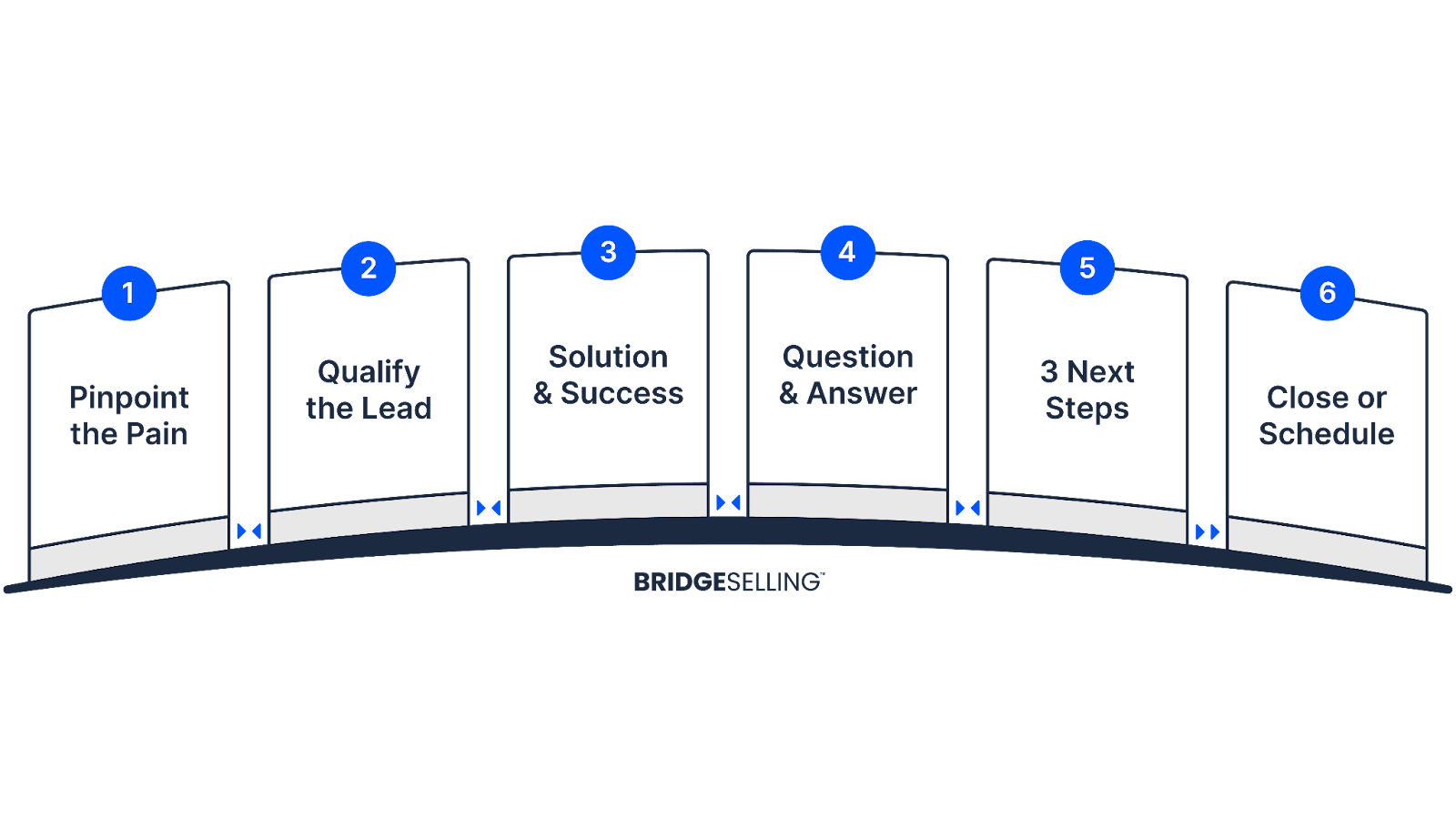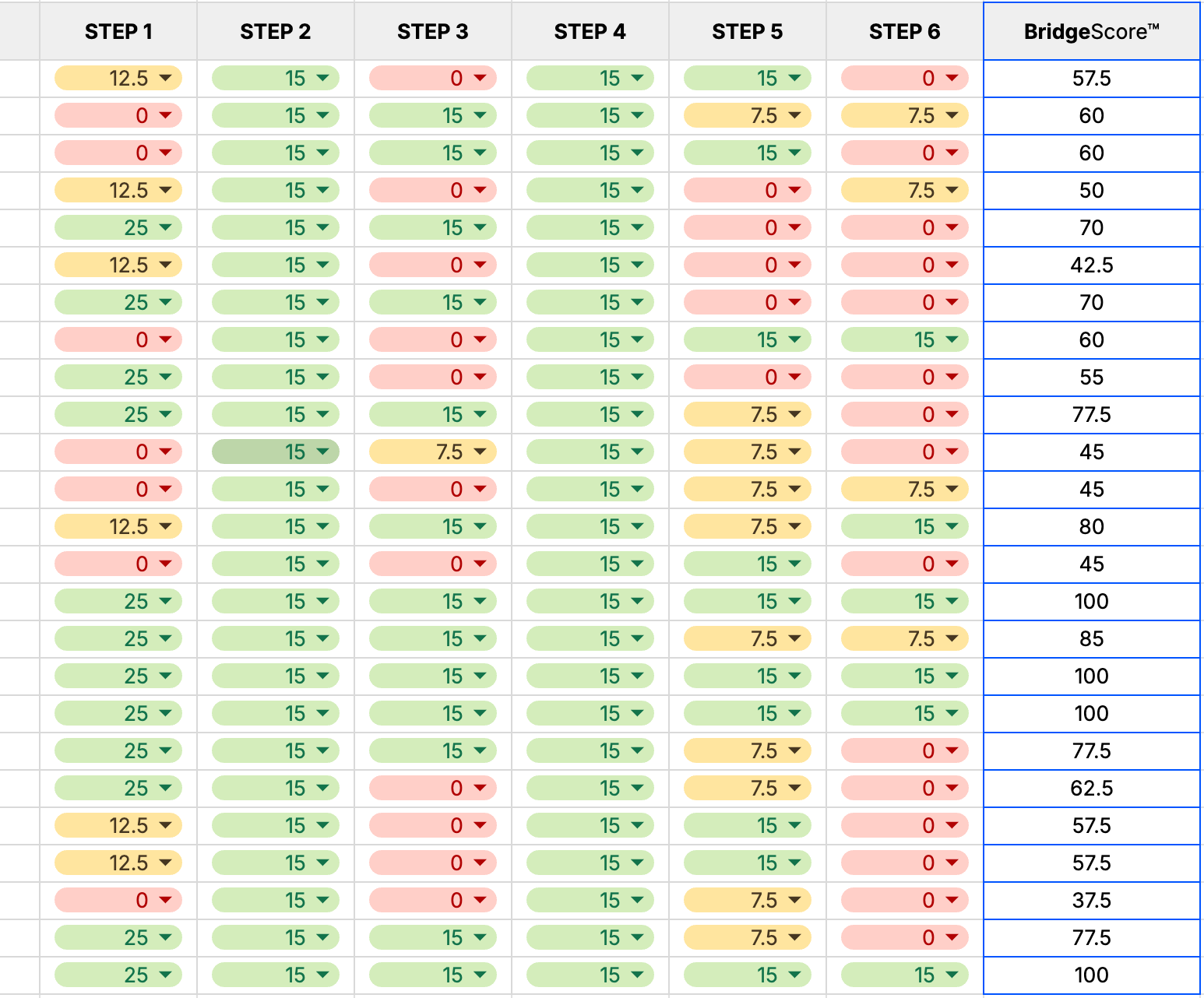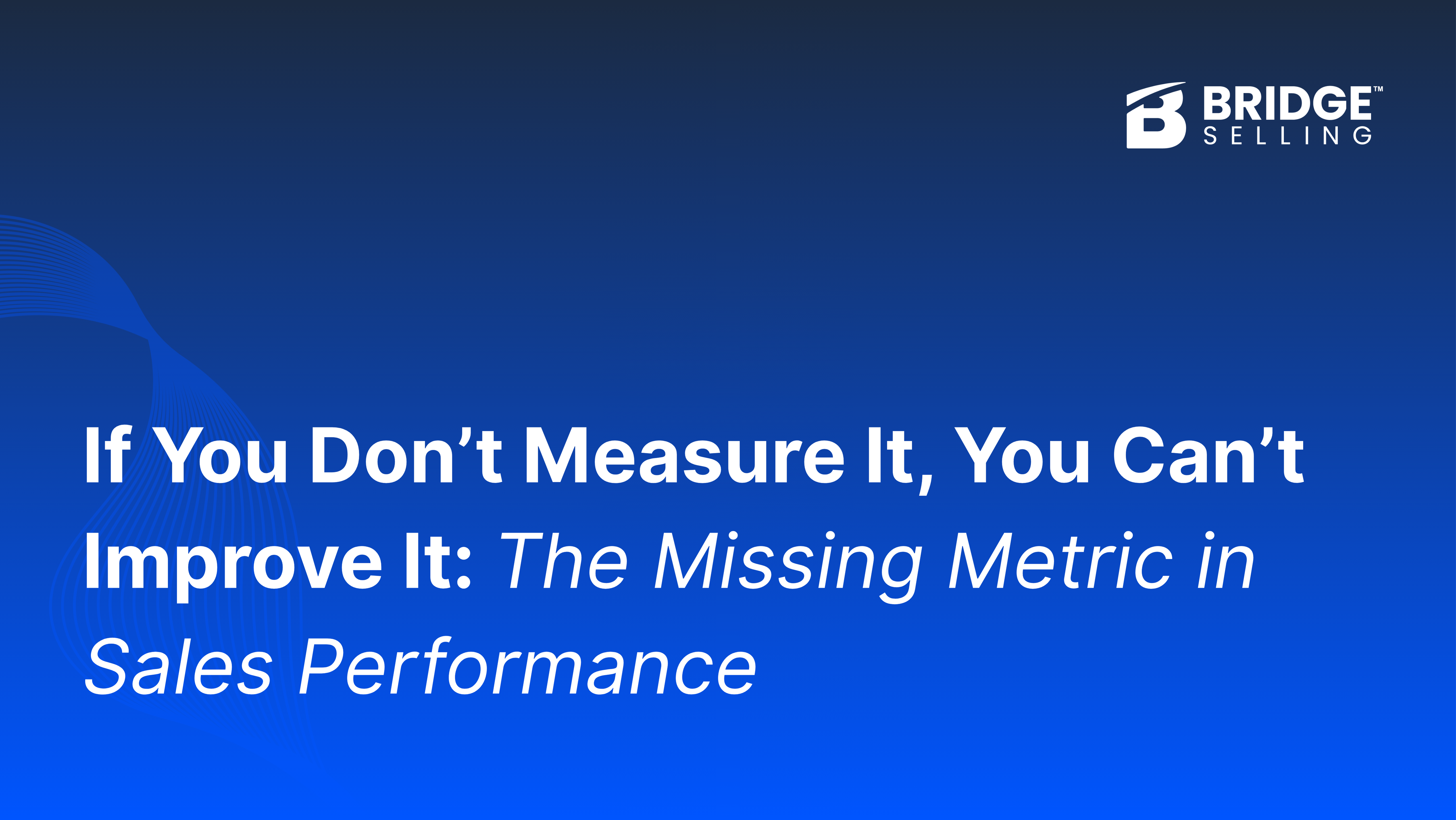Across all the sales leaders I’ve worked with, every one of them can tell you who’s hitting quota and who isn’t.
But ask them why one rep consistently closes deals while another struggles, and the answers get fuzzy:
- “She just has that natural charisma.”
- “He’s better at building rapport.”
- “They seem to ask the right questions.”
In other words? Gut feel.
Here’s the problem:
Sales teams obsess over lagging indicators like revenue and close rate, but almost no one measures the quality of the sales conversations that drive those outcomes.
If you can’t score a sales call, you can’t coach it. If you can’t coach it, you can’t improve it.
And if you can’t improve it, results stay unpredictable, no matter how many leads you pump into the pipeline.
This is the performance gap no one talks about.
And closing it starts with one simple shift: scoring the effectiveness of your sales calls.
What You’ll Learn in This Article
- Why most sales teams fail to measure call effectiveness (and what that costs)
- How scoring sales calls gives leaders and reps a clear standard for improvement
- The six things to listen for to measure call effectiveness
- How call scoring turns vague feedback into focused coaching
- A simple way to start scoring your team’s calls today
Why Most Sales Teams Fail to Measure Call Effectiveness (and What That Costs)
Here’s the uncomfortable truth: Most sales leaders don’t really know what’s happening inside their team’s calls.
They know the outcomes (who closed, who didn’t, etc.) but not the quality of the conversations that produced those results.
Instead of tracking call quality, teams track the big metrics:
- Pipeline size
- Close rate
- Revenue booked
These matter, but they only tell you what happened after the fact. They’re lagging indicators. By the time you see them, it’s too late to fix what went wrong inside the calls that caused those results.
Without a way to measure call effectiveness, leaders are stuck reacting to outcomes instead of improving the conversations that lead to them.
The Implications on Coaching
When there’s no objective standard for what an effective sales call includes and sounds like, coaching is general and anecdotal:
- “Build more rapport.”
- “Ask better questions.”
- “Be more confident when closing.”
Reps are left to figure it out through trial and error. High performers can’t easily explain what they do naturally, and struggling reps don’t know what specifically to fix. Everyone’s guessing.
The data backs this up. In a 2025 Salesloft study, “37% of sellers say they rarely or never receive personalized feedback.” And, “only 21% of sellers say the coaching they receive is effective.”
Imagine a professional athlete saying they never received personalized feedback from their coaches or that the coaching they received isn’t effective. If we’re going to approach sales as professionals, effective coaching is a non-negotiable for achieving excellence.
The question becomes, how do sales leaders coach their team effectively?
Why Scripts Don’t Solve It
To create consistency, many sales leaders turn to scripts. On the surface, it seems logical: give reps the exact words to say, and they’ll all stay on track.
But scripts don’t build confident, capable reps. Instead, they:
- Make calls sound robotic instead of human
- Fail to equip reps to handle the twists and turns of a real conversation
- Leave prospects feeling “sold,” not served
Scripts become a crutch. They create uniformity, but not effectiveness. They can’t teach a rep how to think, adapt, or guide a conversation naturally- and that’s what real buyers respond to.
The cost of all this?
- Reps guessing instead of growing
- Leaders coaching reactively, not proactively
- Inconsistent buyer experiences that weaken trust
- Results that fluctuate wildly from rep to rep, month to month
Without an objective way to measure and improve call quality, you’re stuck managing outcomes rather than fixing the conversations that drive them.
The good news is, there’s a solution that’s easy to learn and easy to teach.
How Call Scoring Fixes the Problem
Scoring sales calls does something most sales teams struggle to experience: it replaces guesswork with a clear, shared standard of excellence.
Instead of relying on gut feel or vague feedback, leaders and reps now have an objective yardstick for what “good” looks like in a sales conversation.
The key to effective scoring is that you measure and score the right things. We’ll get into the specifics of that in a minute. First, let’s look at what call scoring accomplishes for you as a sales leader.
From Vague to Specific
Without scoring, coaching feedback might sound like this:
“You need to ask better discovery questions.”
While that might be true, it doesn’t give the seller clarity on how to ask better questions. Just as important, it doesn’t equip the rep with a deeper understanding of why asking better discovery questions matters.
With scoring, you get both specificity and the why behind it. The vague feedback becomes:
“In Step 1 of the call, you uncovered a surface-level problem, but you didn’t dig into the impact it was having on their business and the emotional problem that creates. Without understanding those things, you can’t speak to the root of their problem, which is what they’re actually trying to solve for. That’s why you only scored 50% here. What’s a follow-up question you could ask to get to the real pain point.”
The difference?
- The rep knows exactly what to fix.
- The leader has a concrete reason for their feedback.
- Both can track progress over time.
Why Scoring Calls Matters
Scoring shifts the conversation from random inputs to strategic actions that drive desired outcomes.
It allows you to:
- Spot patterns across the team
- Identify strengths and weaknesses at the step level
- Pinpoint which moves consistently lead to closed deals
- Coach with precision, not platitudes
When every rep knows the exact behaviors that lead to success and how well they’re executing them, improvement stops being random and starts being repeatable.
Scoring doesn’t just measure performance. It makes performance measurable, coachable, and improvable in a way that transforms both the rep’s confidence and the leader’s ability to lead.
Now, let’s look at what to base call scores on for maximum effectiveness.
The Six Core Topics That Drive Every Successful Call
Every effective sales call no matter the industry, product, or sales style, comes down to a handful of core topics.
At BridgeSelling™, we’ve distilled those topics into The BridgeSelling™ Framework, a flexible, six-step call flow that gives every rep a proven path from “hello” to close.

These steps aren’t scripts.
They’re milestones in the conversation that move the buyer closer to a decision while giving the rep what they need to qualify and close with confidence. And, each step is supported by data, which is why each has earned a place in the call flow.
Here’s the high-level flow:
- Pinpoint the Pain
Surface the real, most important problem the buyer wants solved. Without this, everything else is guesswork. - Qualify the Lead
Determine if this is a mutual fit. Your offer for their problem and their situation for your offer. - Solution + Success
Connect your solution directly to the pain they shared and paint the picture of what success looks like. - Q&A
Invite and address the buyer’s toughest questions. This is where trust is earned. - 3 Next Steps
Give the buyer a clear, frictionless path forward. No vague “follow-ups” that stall momentum. - Close or Schedule
End with a decision, whether it’s the sale or the next meeting.
When you score a sales call using these six moves, you’re no longer asking, “Did this call go well?” You’re asking, “How well did the rep execute the moves that lead to sales?”
And here’s the key:
While these six moves are consistent across companies, what “good” looks like in each step will vary.
That’s why part of our process is helping every client define what full credit sounds like in their context using their language, their process, and their buyer’s expectations.
That way, the scoring isn’t just theoretical. It’s specific, relevant, and instantly useful.
BridgeScore™: The Measurement for Call Scoring
If The Bridge is the what – the six moves that drive an effective sales call – BridgeScore™ is how we measure execution.
It’s a simple but powerful tool:
We take each of the six steps in The Bridge and score them individually based on how well they were executed in a real conversation.
The scale is straightforward:
- No Credit – The step was skipped.
- Half Credit – The step was partially executed, but key elements were missing.
- Full Credit – The step was executed at a high level, accomplishing exactly what it was meant to.
For example:
- If a rep jumps into features without attempting to uncover the buyer’s real pain, that’s no credit on Pinpoint the Pain.
- If they ask some decent questions but fail to tie them to the emotions associated with the problem or uncover the true root problem, that’s half credit.
- If they surface the root problem, connect it to the buyer’s emotions related to solving it, and confirm alignment– now we’re at full credit.
When calls are scored for effectiveness using this framework, it’s not opinion-based feedback that can leave the rep guessing. With BridgeScore™, there’s no guesswork.
Reps and leaders both know exactly where a call was strong and where it fell short, step by step.
One important note:
While the principles for each of the six steps are the same for every company, the name of each step and what full credit looks like for each step is unique.
A SaaS company selling to CFOs will define Qualify the Lead very differently from a financial services firm talking to a high-net-worth investor.
That’s why part of our work with clients is helping them build a custom BridgeScore™ rubric:
- We define full credit for each step.
- We align the language and criteria with their process, product, and market.
- We make sure scoring feels native to the team, not bolted on from the outside.
The result? A clear, objective standard for what “good” looks like in every sales call, one that reps can aim for and leaders can coach to.
Seeing the Patterns – How Scoring Reveals Coaching Opportunities
One scored call is helpful.
A set of scored calls is a goldmine.
When you track scores across multiple calls for each rep, patterns emerge:
- A rep who consistently scores high on Pinpoint the Pain but low on Close or Schedule isn’t struggling with discovery, they’re struggling with commitment.
- A rep who nails the Solution + Success step but consistently drops points on Qualify the Lead is wasting time on buyers who were never a fit in the first place.
Why this matters for coaching:
Instead of giving each rep a laundry list of “things to work on,” leaders can focus on the one or two steps that will make the biggest difference.
And because BridgeScore™ is tied to a clear definition of what full credit looks like at each step, reps know exactly what to aim for.

Here’s a side-by-side set of calls scored for a single rep over several weeks. You can easily spot the patterns with the green, yellow, and red scoring that corresponds with full, half, or no credit for each step.
This visual instantly shows both rep and leader where progress is happening and where to keep focusing.
The payoff is this: Scoring turns a vague “get better at selling” into a targeted growth plan. One that’s measurable, trackable, and proven to move the needle.
This kind of targeted coaching, paired with a clear bar for what an effective sales call looks like, is what’s helped our clients increase close rates by up to 50% and increase revenue from $3M to $8M in a single month.
Those results can be replicated with any team that is willing to adopt the call flow, score calls and coach to improve the scores.
The Right Structure Turns Good Reps into Great Ones
Most sales leaders already know who’s closing and who isn’t. What they often don’t know is why.
Without a clear, measurable standard for what makes an effective sales call, coaching becomes guesswork.
Reps try to figure it out by trial and error. Leaders rely on gut feel and results stay unpredictable, no matter how much you invest in leads, tools, or motivation.
The BridgeSelling™ System changes that.
By combining a flexible call flow with a customized scoring method, we give sales leaders a way to measure what matters, coach with precision, and build a team that wins consistently.
- Instead of vague feedback, you’ll have clear standards.
- Instead of disconnected tactics, you’ll have a complete, repeatable framework.
- And instead of unpredictable results, you’ll have a team that performs with clarity and confidence call after call.
If you’re ready to stop guessing and start improving every conversation, let’s talk about what a custom BridgeSelling™ System could look like for your company.


